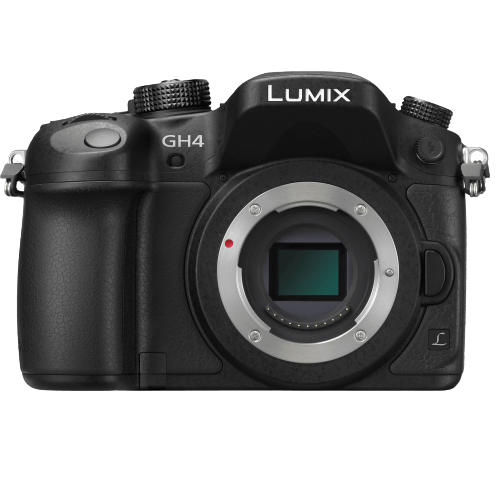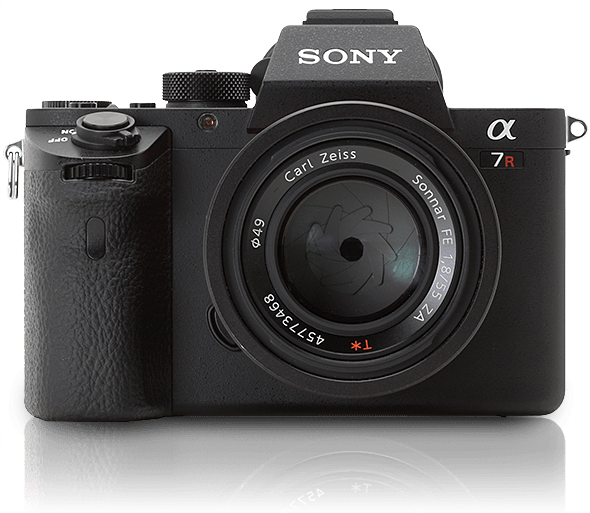Panasonic Lumix DMC-GH4 vs Sony a7R II Comparison
Panasonic Lumix DMC-GH4

Sony a7R II

The Sony a7R II outperforms the Panasonic Lumix DMC-GH4 with a score of 70/100 compared to the GH4’s 58/100. Both cameras are mirrorless and were released in 2014 and 2015, respectively. They share similarities in size and weight, with the GH4 measuring 133 x 93 x 84mm and weighing 560g, while the a7R II measures 127 x 96 x 60mm and weighs 625g.
The Sony a7R II’s higher score shows that it is a superior camera. It offers better overall performance, justifying its higher launch price of $3198 compared to the GH4’s $1700. However, the Panasonic Lumix DMC-GH4 holds its own with a lighter weight and lower price point, making it a more budget-friendly option.
When considering these factors, the Sony a7R II is the better camera for those prioritizing performance, while the Panasonic Lumix DMC-GH4 remains a viable choice for budget-conscious consumers.
Panasonic Lumix DMC-GH4 vs Sony a7R II Overview and Optics
The Sony a7R II surpasses the Panasonic Lumix DMC-GH4 in optics with a score of 81/100 compared to the GH4’s 52/100. Both cameras share similarities in specs, such as having a CMOS sensor type and different processors, with the GH4 using Venus Engine IX and the a7R II using Bionz X.
The a7R II outperforms the GH4 in several aspects. With a higher megapixel count of 42.4 compared to 16, it captures more detail, resulting in sharper images. The a7R II also boasts a higher DXOMARK sensor score of 98, indicating better overall image quality. Additionally, the Sony a7R II has a full-frame sensor size, allowing for better low-light performance and a shallower depth of field. The camera also features image stabilization and a Sony FE lens mount, which offers a wider selection of lenses.
On the other hand, the GH4 has some advantages over the a7R II. It has a faster shooting speed of 12 frames per second, compared to the a7R II’s 5 frames per second, making it more suitable for capturing fast-moving subjects. Furthermore, the GH4 uses a Micro Four Thirds sensor size and lens mount, which typically results in smaller and lighter camera bodies and lenses.
Taking these factors into account, the Sony a7R II proves to be the superior camera in terms of optics, with higher image quality and better low-light performance. However, the Panasonic Lumix DMC-GH4 may still be a viable option for those prioritizing shooting speed and portability.
Panasonic Lumix DMC-GH4 vs Sony a7R II Video Performance
The Panasonic Lumix DMC-GH4 outperforms the Sony a7R II in video capabilities, scoring 70 out of 100 compared to the Sony’s 56. Both cameras share the advantage of 4K video resolution, providing high-quality footage for videographers.
The Lumix DMC-GH4 has a maximum video dimension of 4096 x 2160, while the a7R II reaches 3840 x 2160. This difference allows the GH4 to produce slightly larger and more detailed videos. Additionally, the GH4 has a built-in time-lapse functionality, making it more versatile for capturing creative video content without needing additional equipment.
On the other hand, the Sony a7R II offers a higher maximum video frame rate of 30fps, compared to the GH4’s 24fps. This enables smoother video playback and better slow-motion capabilities in the a7R II. However, the lack of built-in time-lapse functionality in the Sony camera means users will need external tools or software to achieve time-lapse effects.
In comparing the video capabilities of these two cameras, the Panasonic Lumix DMC-GH4 takes the lead with its larger video dimensions and built-in time-lapse functionality. These features make it a more versatile and user-friendly option for videographers. While the Sony a7R II does offer a higher frame rate for smoother video playback, it falls short in other areas that contribute to overall video performance. Therefore, the Panasonic Lumix DMC-GH4 is the better choice for those prioritizing video capabilities in their camera selection.
Panasonic Lumix DMC-GH4 vs Sony a7R II Features and Benefits
The Panasonic Lumix DMC-GH4 emerges as the winner in the features comparison, scoring 70 out of 100, while the Sony a7R II scores 57. Both cameras have a 3-inch screen, no GPS, WIFI, and no Bluetooth. They also both feature a flip screen, making them versatile for different shooting angles.
The Lumix DMC-GH4 excels with its touchscreen capability, which the Sony a7R II lacks. This allows users to navigate menus and settings more efficiently and intuitively. Additionally, the GH4’s screen resolution is 1,036,000 dots, which is slightly lower than the a7R II’s 1,228,800 dots. However, the touchscreen feature compensates for this difference in resolution, providing a more user-friendly experience.
On the other hand, the Sony a7R II has a higher screen resolution, which may offer a slightly clearer and sharper display. However, this advantage is not enough to outweigh the benefits of the GH4’s touchscreen capability.
In terms of features, the Panasonic Lumix DMC-GH4 is the superior choice due to its touchscreen functionality. It makes navigating menus and settings easier and more efficient, which can be crucial when capturing images quickly. While the Sony a7R II has a higher screen resolution, it does not offer enough of an advantage to surpass the GH4’s overall feature score. Therefore, the Panasonic Lumix DMC-GH4 is the better camera in terms of features.
Panasonic Lumix DMC-GH4 vs Sony a7R II Storage and Battery
The Panasonic Lumix DMC-GH4 outperforms the Sony a7R II in storage and battery, scoring 60/100 compared to the Sony’s 16/100. Both cameras accept SD, SDHC, and SDXC memory cards, but the Lumix GH4 has two memory card slots, while the a7R II only has one. Additionally, the a7R II accepts Memory Stick Duo, Pro Duo, and Pro-HG Duo cards.
The Lumix GH4’s battery life is superior, providing 500 shots compared to the a7R II’s 290 shots. The GH4 uses a DMW-BLF19 battery, while the a7R II uses an NP-FW50 battery. Neither camera offers USB charging.
Despite the lower score, the Sony a7R II has an advantage in accepting additional memory card formats, which could be beneficial for some users. However, the Panasonic Lumix GH4’s longer battery life and extra memory card slot make it the clear winner in this comparison for storage and battery capabilities.
Panasonic Lumix DMC-GH4 vs Sony a7R II – Our Verdict
Are you still undecided about which camera is right for you? Have a look at these popular comparisons that feature the Panasonic Lumix DMC-GH4 or the Sony a7R II:

